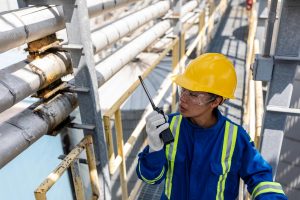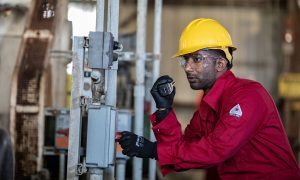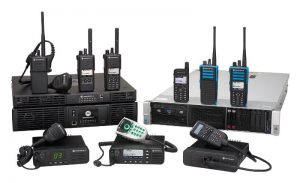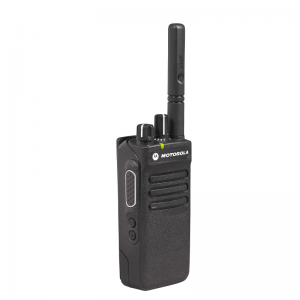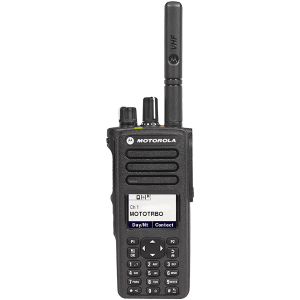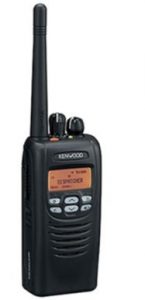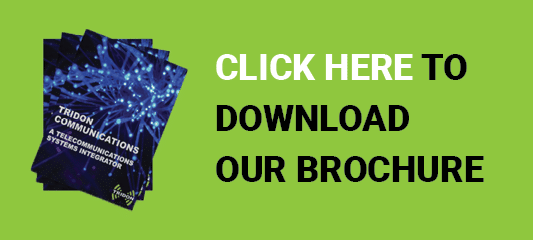Have questions about upgrading to digital?
CONTACT US
Analog two-way radios have been used in Alberta for close to a century, first by emergency responders. Later, they were used to provide communication in Alberta’s budding oil industry near Fort McMurray and Athabasca. Not long after, analog two-way radios could be found in tourism destinations like West Edmonton Mall, helping hospitality staff improve the guest experience.
But since the early 90’s, manufacturers like Motorola and Kenwood have been dedicating resources into innovating digital two-way radios. Today, the features and benefits digital radios provide users consistently make them a better choice than their analog predecessors.
Analog two-way radios are still used frequently throughout Alberta. But, if you’re considering the switch to digital, here is an overview of the benefits your team and your project will experience.
Digital Two-Way Radios Have a Longer Battery Life
When the battery dies, your portable radio is useless. Because reliable communication is a safety requirement on industrial job sites, you have to find a spare or wait until your battery recharges. Digital two-way radios mitigate this challenge by being far more energy efficient. A fully charged battery will last approximately 40% longer than it would for an analog radio.
The improved efficiency of digital two-way radios means longer talk times on batteries that can get your team through an entire shift. This makes a considerable difference if you’re frequently on your radio, getting updates from multiple teams or contacting dispatchers. During that kind of work-day, having a battery that can last an entire shift is the difference between seamless communication and frustrating delays in response or even work stoppages.
Digital Two-Way Radios Offer Better Coverage
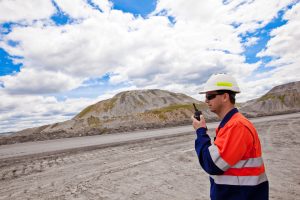
Digital Radios Provide Better Voice Clarity
Typical analog radio microphones will pick up all the noise that surrounds the person transmitting. Ambient noise, including alarms, vehicle engines, and machinery can drown out the message you are trying to send, forcing you to shout, repeat yourself, or move to a quieter area so you can communicate clearly.
Digital two-way radios and accessories have built-in noise cancellation. This means they are able to filter out ambient noise and focus solely on the voice of the person speaking. This means you can send and receive loud and clear messages and be understood the first time.
Digital Radios Have Better Capacity
ISED – Innovation, Science and Economic Development Canada (formerly Industry Canada) – is the government agency responsible for managing the radio spectrum in Canada, and that includes issuing radio frequency licenses. The development of digital radios has made this job much easier because digital radios allow for a greater number of users to communicate on a single frequency. This means ISED can make the radio spectrum – a valuable and limited resource – available to more industry users without sacrificing the reliability or security of communications.
There are two main ways digital radios provide this added capacity: CDMA and TDMA.
TDMA stands for ‘Time Division Multiple Access’, and is the digital standard used by Motorola Solutions. TDMA divides a radio’s channel into sequential time slots. Digital radios using TDMA will treat information sent in each time slot as a data packet, transmitting it as soon as the radio user is done speaking. While this data is transmitting, another user can transmit a message on the same channel without interfering with the first message being received.
CDMA is a little different. It stands for ‘Code Division Multiple Access’. Rather than dividing a channel into time slots, it uses a method called “Spread Spectrum’ to transmit information.
In both cases, digital radios are providing more efficient use of channel than their analog counterparts. The more efficient use of a channel means your team is spending less time waiting to send or receive a message. That means less delay and improved productivity.
There Is More Innovation to Come
Analog radios have been around for nearly a century. After that long, there are a limited number of improvements users can expect. In other words, analog two-way radios are about as good as they are ever going to get. And the older analog systems become, the closer they get to their ‘legacy’ phase when manufacturer support ends and replacement parts become harder to find.
But manufacturers like Kenwood and Motorola are regularly enhancing the range of hardware and software features digital two-way radios already possess. MOTOTRBO radios from Motorola, for example, can be customized to offer a number of software applications that improve voice and data communication, safety, productivity, and trackability.
The value end-users get from these applications, along with better audio, coverage, capacity, and battery life, are why Motorola, Kenwood and other manufacturers will continue to improve and refine digital two-way radios as they move away from analog technology.
Below, you can find a few of the digital radios that are serving our customers well in the field. If you have questions about these or any other models, contact us and we’ll be happy to answer them.
Motorola MOTOTRBO XPR 3300e Portable Two-Way Radio
With this dynamic evolution of MOTOTRBO™ digital two-way radios, you’re better connected, safer and more efficient. The XPR™ 3000e Series is designed for the everyday worker who needs effective communications. With systems support and loud, clear audio, these next-generation radios deliver cost-effective connectivity to your organization.
Here’s what’s new in these next-generation radios:
- Integrated Wi-Fi
- Over-the-air software updates
- Bluetooth® 4.0 (future)
- Enhanced audio quality
- Improved expandability
- Better battery life (up to 28 hours)
- Better range (up to 8%)
- Better waterproofing (IP67)
- HazLoc models available
Motorola MOTOTRBO XPR 7550e Portable Two-Way Radio
With this dynamic evolution of MOTOTRBO™ digital two-way radios, you’re better connected, safer and more productive. With high-performance integrated voice and data, and advanced features for efficient operation, these next-generation radios deliver complete connectivity to your organization.
Here’s what’s new in these next-generation radios:
- Integrated accelerometer for optional Man Down
- Bluetooth® 4.0
- Indoor location tracking
- Integrated Wi-Fi
- Over-the-air software updates
- Enhanced audio quality
- Improved expandability
- Better battery life (up to 29 hours)
- Better range (up to 8%)
- Better waterproofing (IP68)
Kenwood NX-200/300 ABP
Kenwood’s NX-x00 series portable lets your team make the call with confidence. This radio is intrinsically safe, and CSA certified for Class I, Division 1: perfect for use in hazardous environments, including oil and gas, construction, forestry, farming, and manufacturing industries.
Both digital and analog compatible, the NX-x00 series portable has a compact, lightweight design. The clear backlit display and ergonomic controls enhance operating ease, while the rugged MIL-STD construction ensures all-weather reliability.
Tridon is a full solution Telecom Systems Integrator with CSA certification and licensed by APEGA. Our Engineering, Service and Tower Divisions collaborate with customers to build engineered solutions including communications systems design, tower inspections and co-location, wireless broadband, fiber optic cabling, site security, and two-way radio communication.

